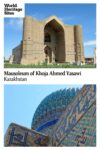Mausoleum of Khoja Ahmed Yasawi
By Zoe
What is the Mausoleum of Khoja Ahmed Yasawi?
Built in the 14th century, the mausoleum is the incomplete final resting place of Khoja Ahmed Yasawi, a 12th-century poet and Islamic scholar. Construction of the mausoleum started in 1389 but was halted in 1405 with the death of the ruling emperor of the time.
Disclosure: This article contains affiliate links. Making a purchase through an affiliate link will mean a small commission for this website. This will not affect your price.
On the same site, there are a handful of other mausoleums, but that of Khoja Ahmed Yasawi is the grandest, despite its unfinished nature. The outside of the building has intricately-designed patterns on the walls, topped with a striking blue dome on the roof.
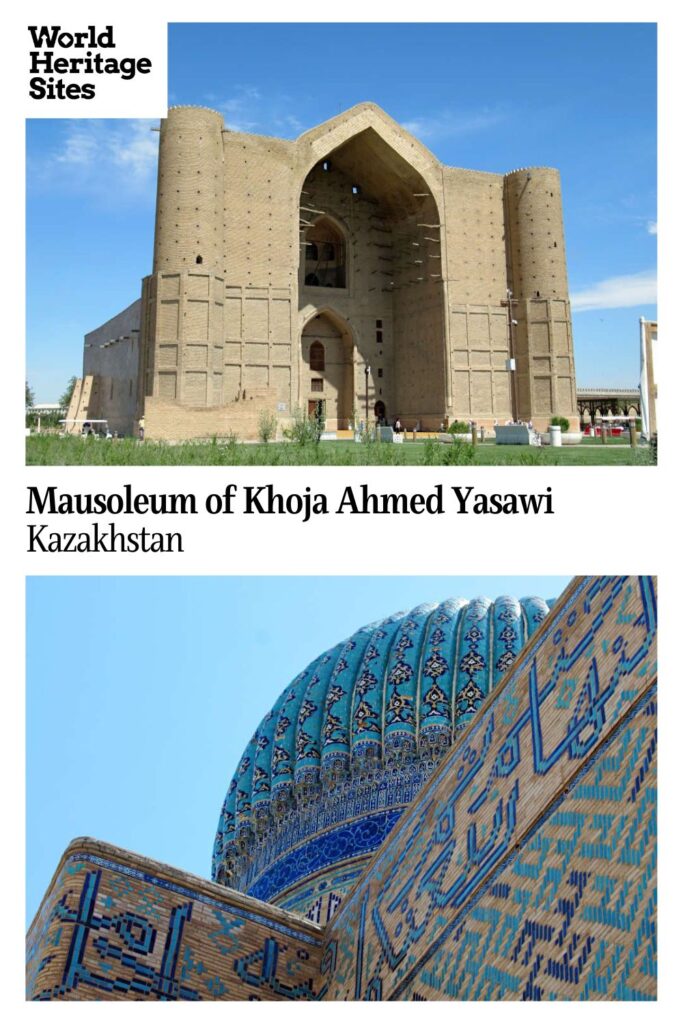
Why is the Mausoleum of Khoja Ahmed Yasawi a UNESCO World Heritage site?
Built during the time of the Timurid Empire, the mausoleum is one of the best-preserved examples of construction from that era. The unfinished elements of the building expose the construction methods and design from the 14th century.
In addition, the building is an excellent example of Central Asian and Islamic architecture and decoration. The methods of building during this time made advances that continued for many years in the future, particularly in Samarkand.
Because of these reasons, the Mausoleum of Khoja Ahmed Yasawi was recognised on the UNESCO World Heritage list in 2003.
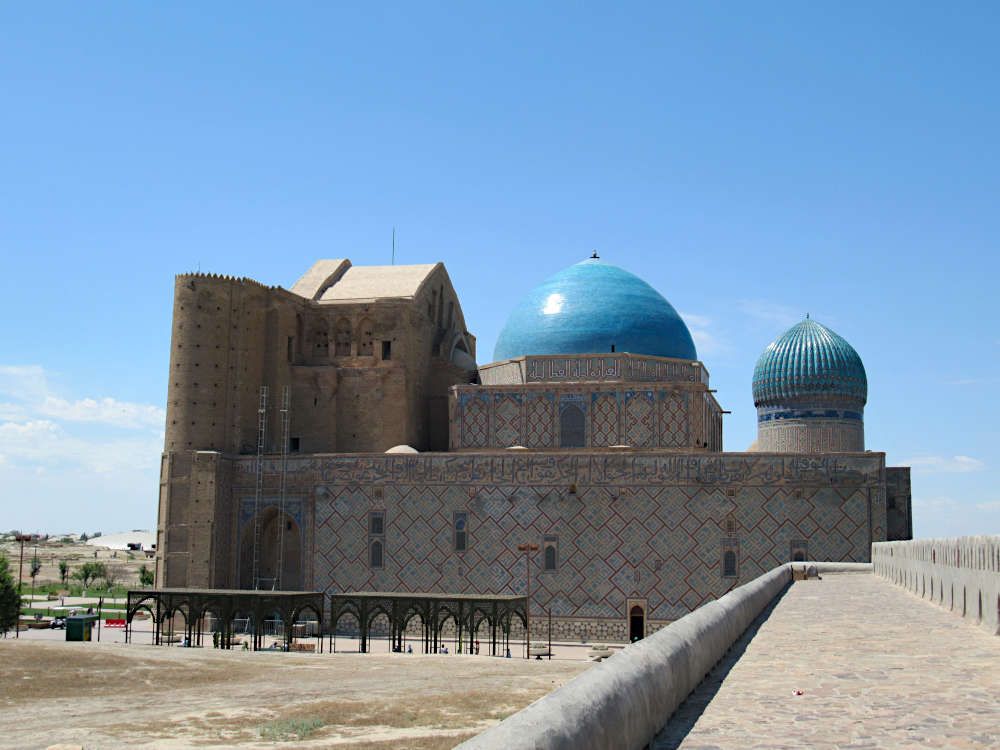
What can you expect on a visit to the Mausoleum of Khoja Ahmed Yasawi?
The outside of the building is a work of art. Intricate designs, beautiful patterns and a towering presence really pull you in.
Inside, however, is much less visually impressive but has more cultural importance. The large rooms with plain white walls can be explored in a pretty short amount of time. But it doesn’t really have that feeling of spirituality and magnificence commonly seen in religious buildings.
The mausoleum sits on the grounds of a large complex of important buildings. Recently dubbed as the Second Mecca for Muslim pilgrims, tourism is only just starting here. New hotels, restaurants and transport links are still being built. It’s like a city that’s waiting for people to arrive.
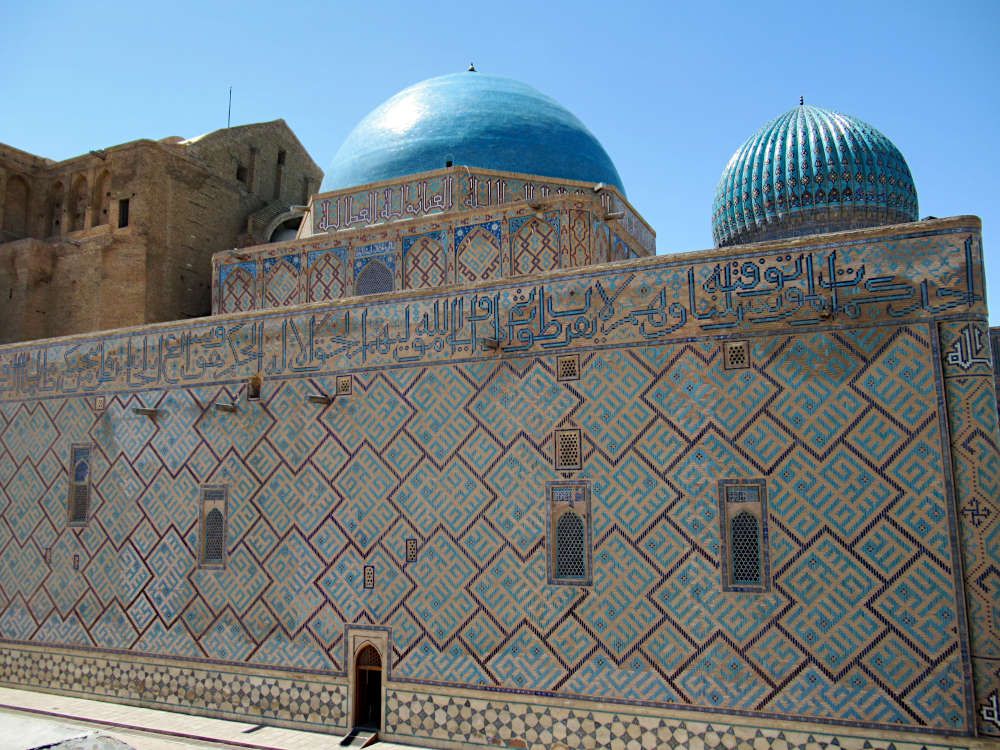
Is this mausoleum worth visiting?
Given that it is remotely located in the south of Kazakhstan, for most people it wouldn’t be worth organising a trip just to visit the mausoleum. Unless you’re visiting for a Muslim pilgrimage or understand the important religious ties, for most tourists visiting if passing through will be most likely. For instance, when travelling between Almaty and Tashkent.
If you arrived on the overnight train from Almaty, you could realistically see the whole site that day, stay overnight and then move on the next day. However, if you’re a more leisurely traveler, spending one full day and two nights here would be plenty of time.
Book your accommodations in Turkistan here.
What sort of travelers would like the Mausoleum of Khoja Ahmed Yasawi?
People who will get the most from visiting the mausoleum and wider complex are Muslims and those with an interest in religion, Islamic culture, Islamic architecture, and Central Asian history. And, anyone who falls into those categories and also loves photographing beautiful buildings will really enjoy visiting here.
Consider taking a three-day Silk Road tour or a five-day version, both of which include the mausoleum. Another option is to book your entire trip so you don’t have to arrange anything.
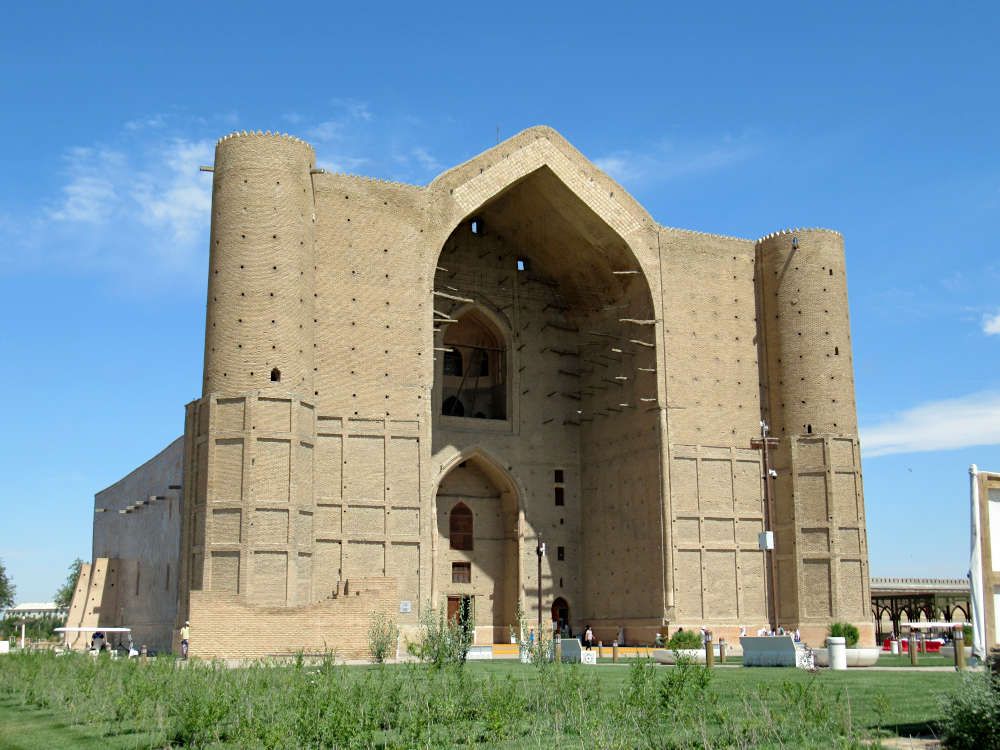
Tips for visiting the Mausoleum
In the summer months, the heat can be unbearable. Head out early or in the late afternoon to avoid the blistering temperatures. The best time to visit Kazakhstan is in the spring or autumn when temperatures are less extreme and more enjoyable.
A conservative dress code should be followed. Dresses and shorts past the knee and tops covering the shoulders are considered respectful for men and women.
Women may also want to bring a scarf to loosely cover their hair when entering the mausoleum. Whether this is mandatory or not remains to be seen, however, as not everyone does it. But you’ll probably feel more comfortable to, especially as an international tourist.
Where is the Mausoleum of Khoja Ahmed Yasawi?
The mausoleum is located in the heart of the walled old city of Turkistan, in southern Kazakhstan. The large and striking domes on the roof of the building make it unmissable.
The next nearest city is Shymkent. However, for most tourists, you’ll be travelling from either Almaty or Tashkent. Almaty connects to Turkistan by road and train. By car is quickest, but by train is more comfortable and you can take an overnight service on a modern sleeper train. Tashkent is located just across the border in Uzbekistan. Shared shuttles and taxis ferry locals and tourists on both sides to the border, where you’ll need to cross on foot.
As a vast and somewhat sparsely populated city – especially around the old town – there’s plenty of parking. Particularly so around the hotels, where it’s free if you stay.
For more information about the Mausoleum of Khoja Ahmed Yasawi, its opening hours and admission fees, see its official website.
Have you been to the Mausoleum of Khoja Ahmed Yasawi? If so, do you have any additional information or advice about this UNESCO World Heritage site? Please add your comments below!

